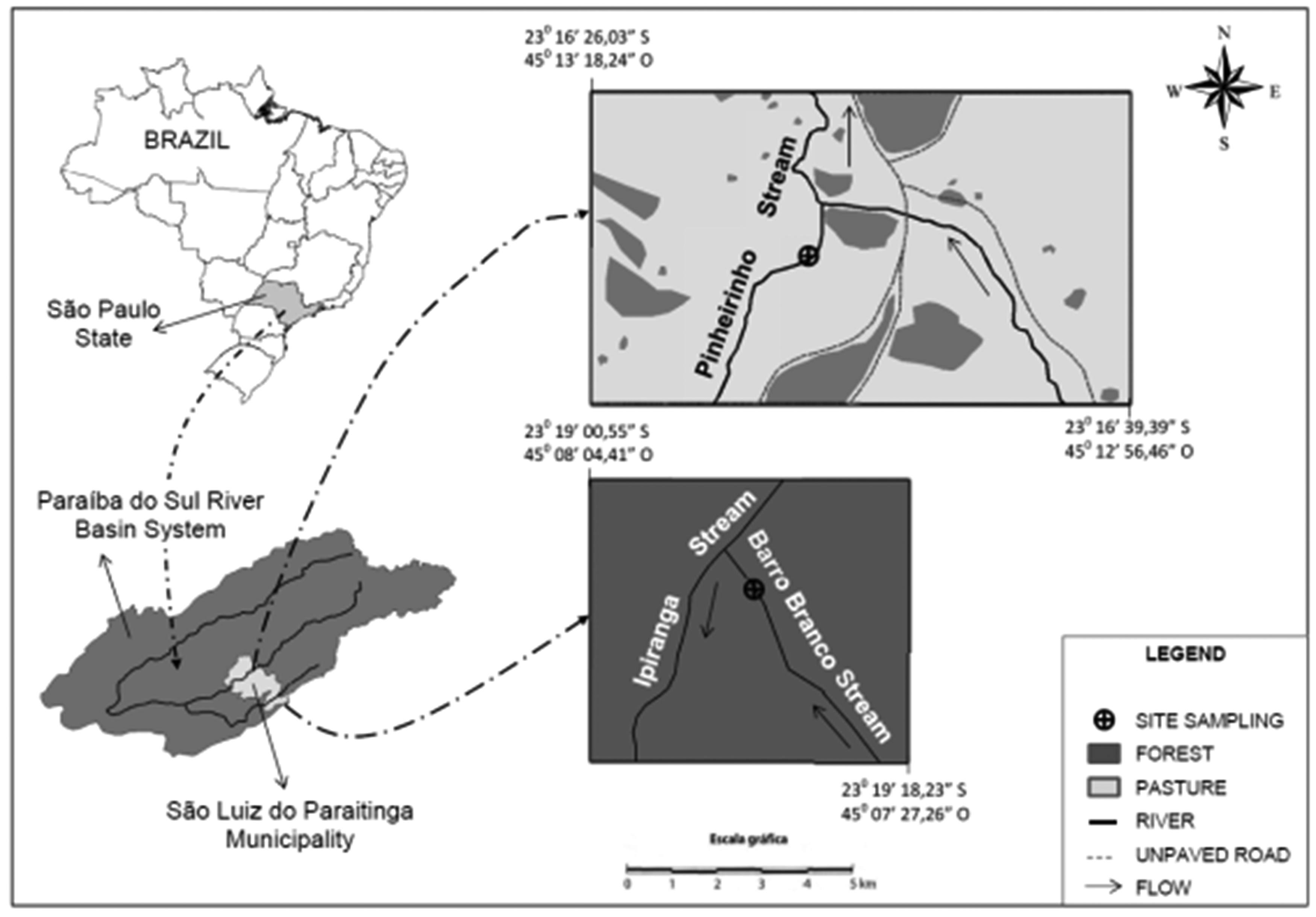Terrestrial invertebrates link terrestrial systems to aquatic ones, making vegetal material produced in the watershed available to aquatic food webs. In this study, using carbon and nitrogen stable isotopes, we evaluated the importance of introduced C4 grasses as a source of carbon in aquatic food webs of headwater streams of the coastal Atlantic Forest located on the north coast of the State of São Paulo, in the southeastern region of Brazil. Terrestrial invertebrates were collected in two streams: one where the main land cover was pristine montane Atlantic Forest (forest stream) and another where the main land cover was introduced C4 forage grasses for livestock (pasture stream). The average δ13C of terrestrial invertebrates collected in the forest stream (−26.3±2.1‰) was significantly (p<0.01) smaller than the average δ13C of terrestrial invertebrates collected in the pasture stream (−15.7±4.7‰), denoting a larger contribution of C4 grasses to terrestrial invertebrates of the pasture stream. The average δ15N of terrestrial invertebrates of the forest stream (4.1±2.4‰) was significantly (p<0.01) lower than the average δ15N of terrestrial invertebrates of the pasture stream (9.5±2.7‰). The relative contribution of C3 and C4 plants to terrestrial invertebrates was estimated using SIAR. In the forest stream, the C3 contribution was on average 0.75 (0.72 minimum to 0.79 maximum), and the C4 contribution was on average 0.25 (0.21 minimum to 0.28 maximum). In the pasture stream, the C3 contribution decreased to 0.20 (0.14 minimum to 0.26 maximum), and the C4 contribution increased to 0.80 (0.74 minimum to 0.86 maximum). These results have several implications for the ecosystem functioning as well as for recent changes in environmental policies of Brazil. The lower nutritional value of C4 grasses may not only decrease invertebrate performance, but also alter the stoichiometry of several components of the aquatic food webs with potential consequence for the whole ecosystem functioning. On the public policy side, recent changes in the Brazilian Forest Act, a series of laws that regulate land cover at the property level, reduced the width of the forested riparian area with potentially dangerous consequences for aquatic ecosystems.
Atlantic Forest; land use; streams; stable isotopes; terrestrial invertebrate



